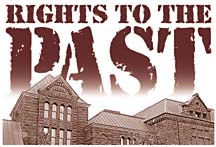 |
Burial return
plan is flawed
A federal review says
that the process did not
include other claimants
A federal review committee yesterday called the return of treasured artifacts to a native Hawaiian organization that reburied them in caves on the Big Island "a seriously flawed process."
The advisory ruling was a blow to Hui Malama I Na Kupuna O Hawaii Nei, a politically connected group that was founded in 1989 to repatriate human remains and artifacts so they can be reburied to honor ancestors.
Hui Malama spearheaded the repatriation movement in Hawaii, but has become controversial, partly because of its role in repatriating items to Kawaihae cave.
Edward Halealoha Ayau, a spokesperson for Hui Malama, left the hearing at the East-West Center on the campus of the University of Hawaii-Manoa shortly after the ruling and declined to comment.
"This decision is a complete surprise to me," said La'akea Suganuma, who represents the Royal Hawaiian Academy of Traditional Arts, which for years has been at odds with Hui Malama and the Bishop Museum over the "loan" of 83 artifacts from Kawaihae cave.
"This committee came to Hawaii to hear the truth from the people. The people spoke. Never before have I seen families, royal societies and plain people just come forth with the truth like this," Suganuma said.
The review committee, which renders nonbinding recommendations in such disputes, was created by the federal Native American Graves Protection and Repatriation Act. NAGPRA was enacted to set up a procedure for artifacts and human remains in museum collections to be returned to Native American and native Hawaiian claimants.
In February 1990, Bishop Museum crated the 83 artifacts in its collection from Kawaihae cave and gave them to Hui Malama.
The inventory list accompanying the crate labeled the transaction "a one-year loan." The items were never returned despite repeated requests from the museum.
Ayau was grilled by the committee on Monday about the loan that he signed.
"Our understanding was that it was to facilitate the repatriation," he said. "It was not our intent to return them and not our understanding that the museum intended return."
When asked if the other claimants had given him permission, Ayau said, "We understood we had it."
The other claimants have said that is not the case.
Committee member Vincas Stephanaitis blamed the dispute on both Hui Malama and the past administration of the museum.
"The flaws in this repatriation case are so egregious I have never seen anything like it and hope never to see it again," Stephanaitis said.
The dispute with Suganuma's group arose because 12 claimants said they wanted to review the repatriation and some of those claimants wanted the items returned. Ayau has repeatedly said that if there is any dispute among the 13 "owners," it should be resolved in court, not by NAGPRA.
Committee member Dan Monroe said, "The process was flawed and excluded the involvement of other claimants."
"This is an incredibly difficult matter and not one the review committee can resolve, but one the native Hawaiians can resolve," he said.
The review committee came to Hawaii this week to hear the Kawaihae dispute at the request of Hui Malama.
Several review committee members stressed they were not saying whether one side was right or wrong. They specifically did not say whether the items should be returned from the cave. They said the process needed to be redone and that it all rested in the hands of the native Hawaiians.
Bishop Museum Director Bill Brown was pleased with the decision, saying it "concurs with their findings and recommendations."
Also yesterday, the committee made findings and recommendations on other disputes:
» In a second dispute over three items found on Molokai that are in Bishop Museum's collection, the committee recommended that the museum move toward repatriation of the items, which include a kii, an 8-inch stick figure with human face carved in a dark wood. Brown said the museum disagrees with the committee and does not intend to repatriate the kii.
» The last dispute involves Hui Malama and the museum over what is called the Kalaina Wawae or footprints in three sandstone blocks that were found on Molokai, put into the museum's collection and then recently restored to the beach and placed in a structure so that they can be viewed.
The story of the footprints stems from a prophecy made by a young woman, Kuuna, several hundred years ago. She drew footprints in the sand of bare feet and square-toed boots. She said that foreigners who would make the boot prints would hurt Hawaiians. Afraid of her prophecy, people promptly stoned her to death.
In a private agreement, struck outside of NAGPRA's jurisdiction, the museum sent the footprints to Molokai but retained legal ownership. The museum said it regained control because it views its stewardship as long-term and wants recourse if the prints are threatened in the future.
"We would not move the stones without consulting extensively with the people of Molokai," Brown said.
huimalama.tripod.com
Bishop Museum
www.bishopmuseum.org
U.S. Interior Dept. -NAGPRA
www.cr.nps.gov/nagpra
[News] [Business] [Features] [Sports] [Editorial] [Do It Electric!]
[Classified Ads] [Search] [Subscribe] [Info] [Letter to Editor]
[Feedback]
